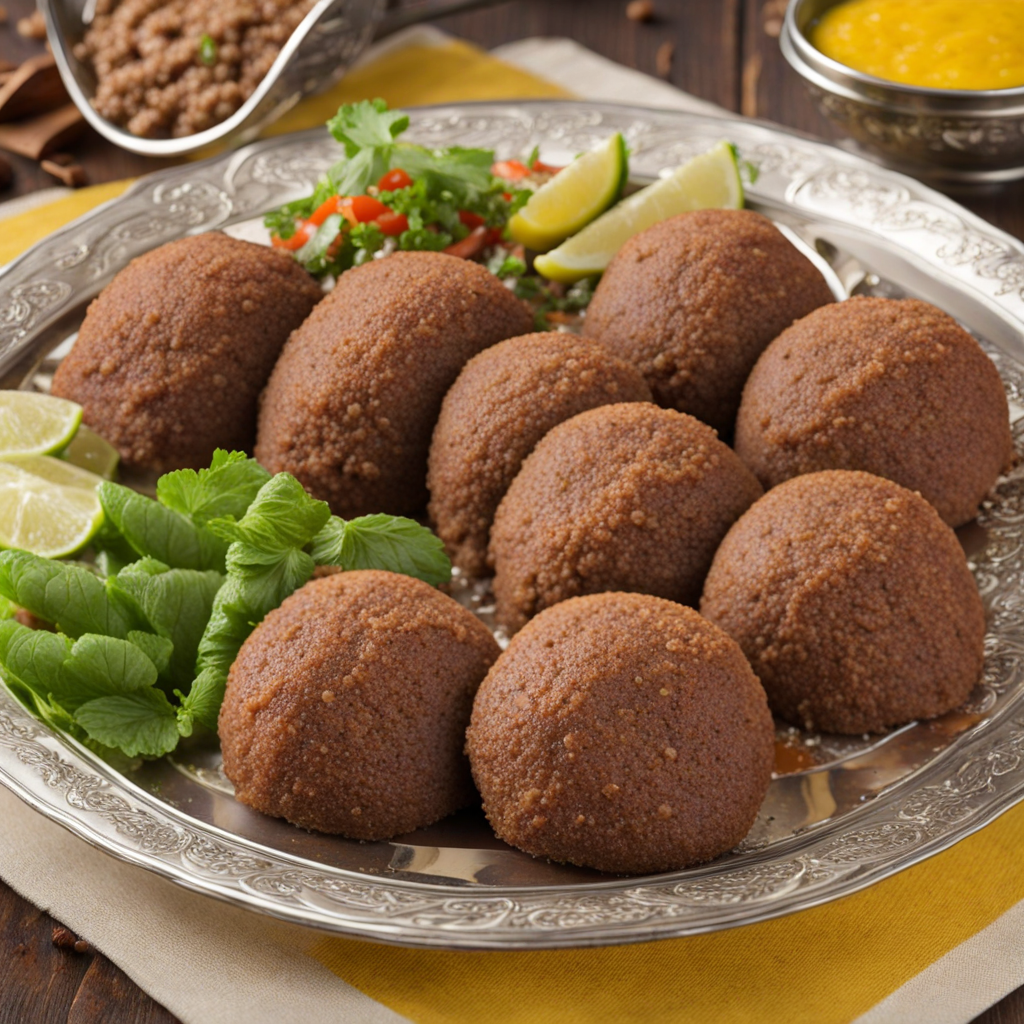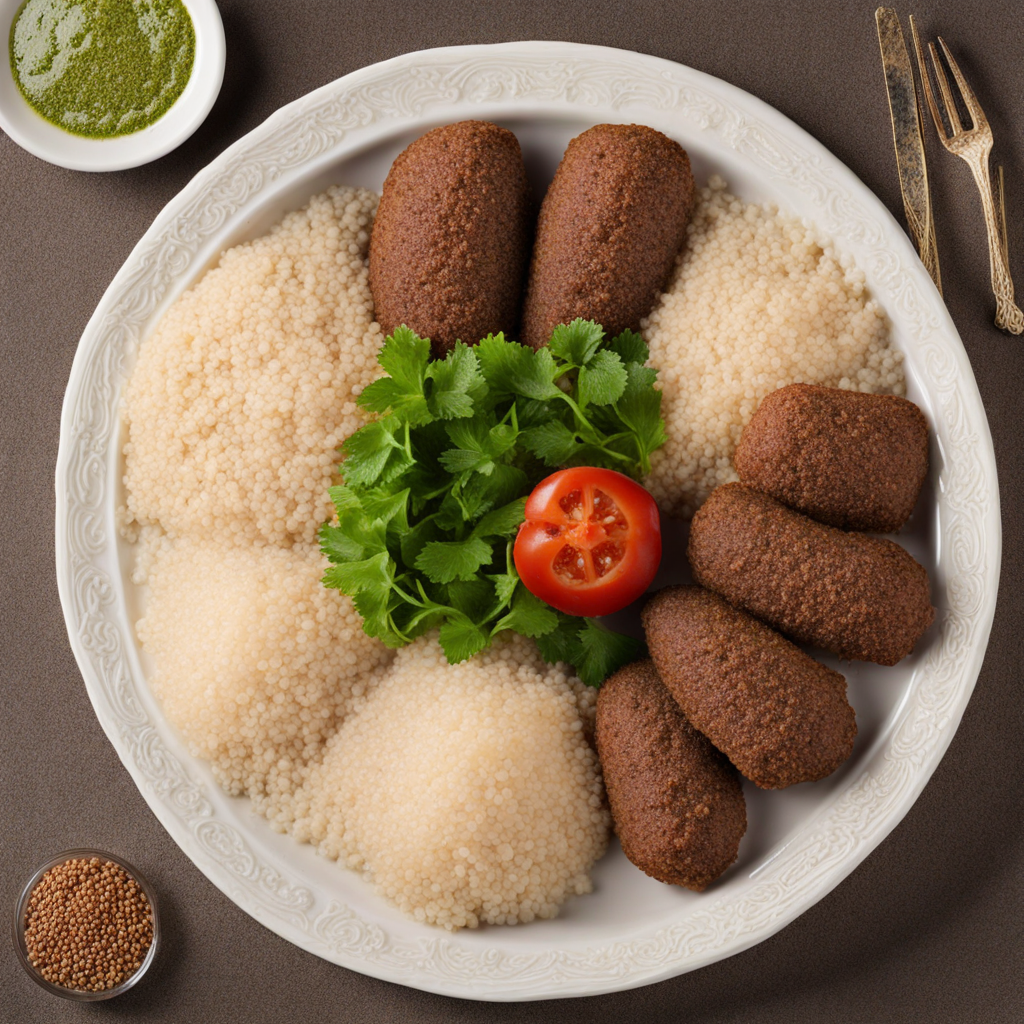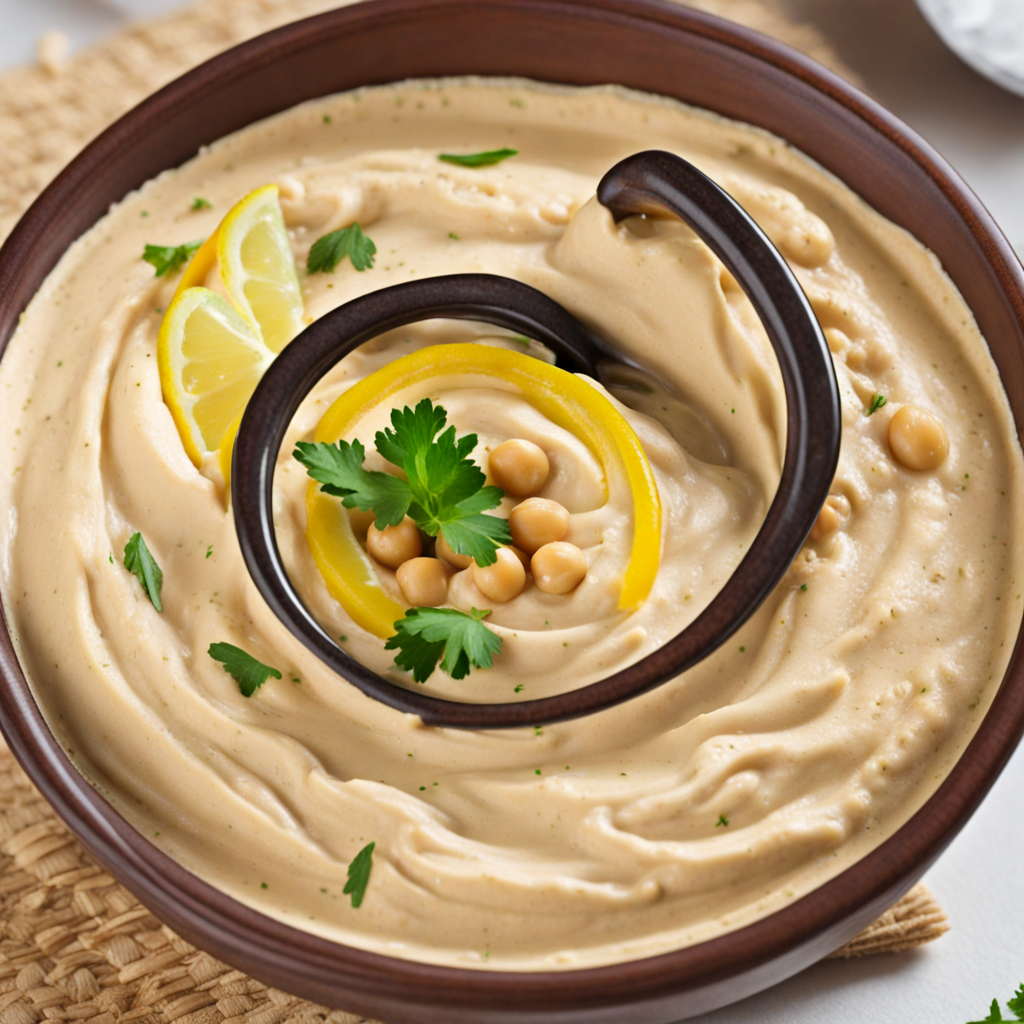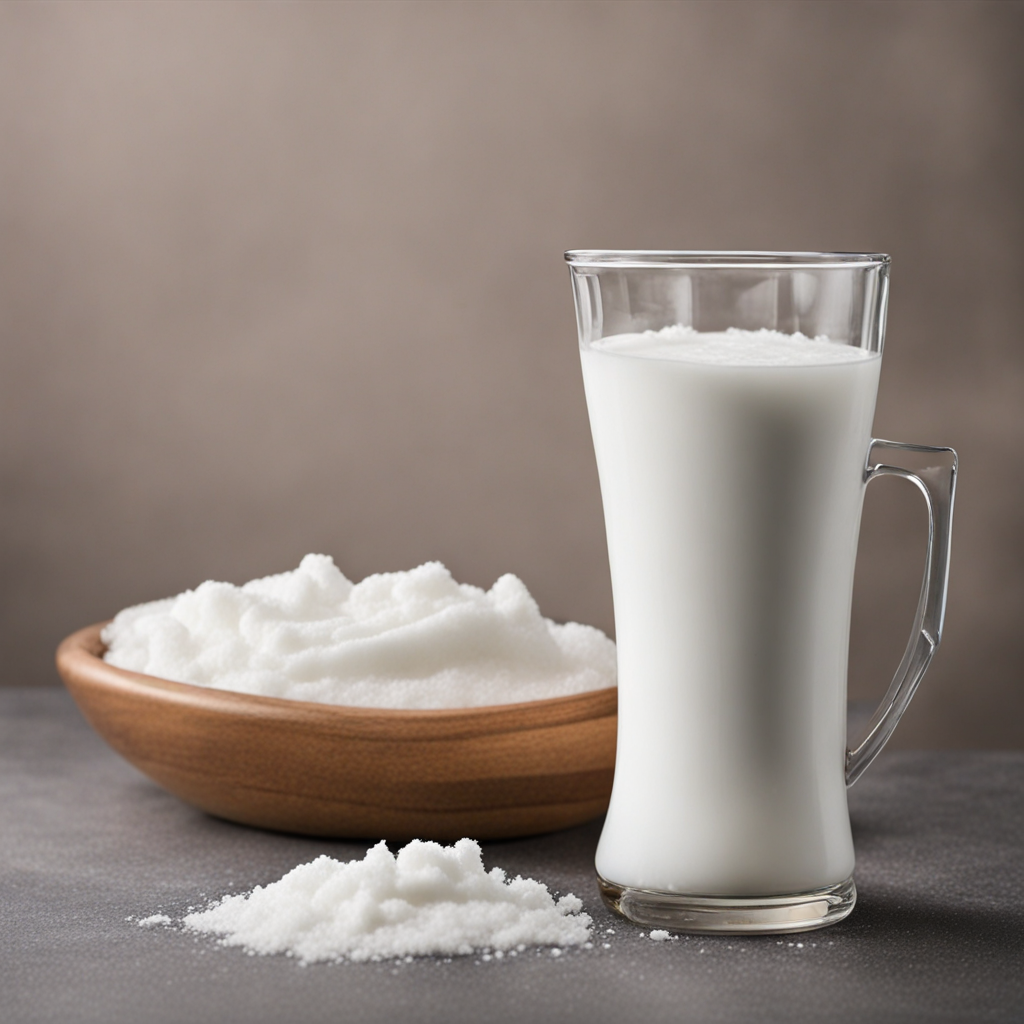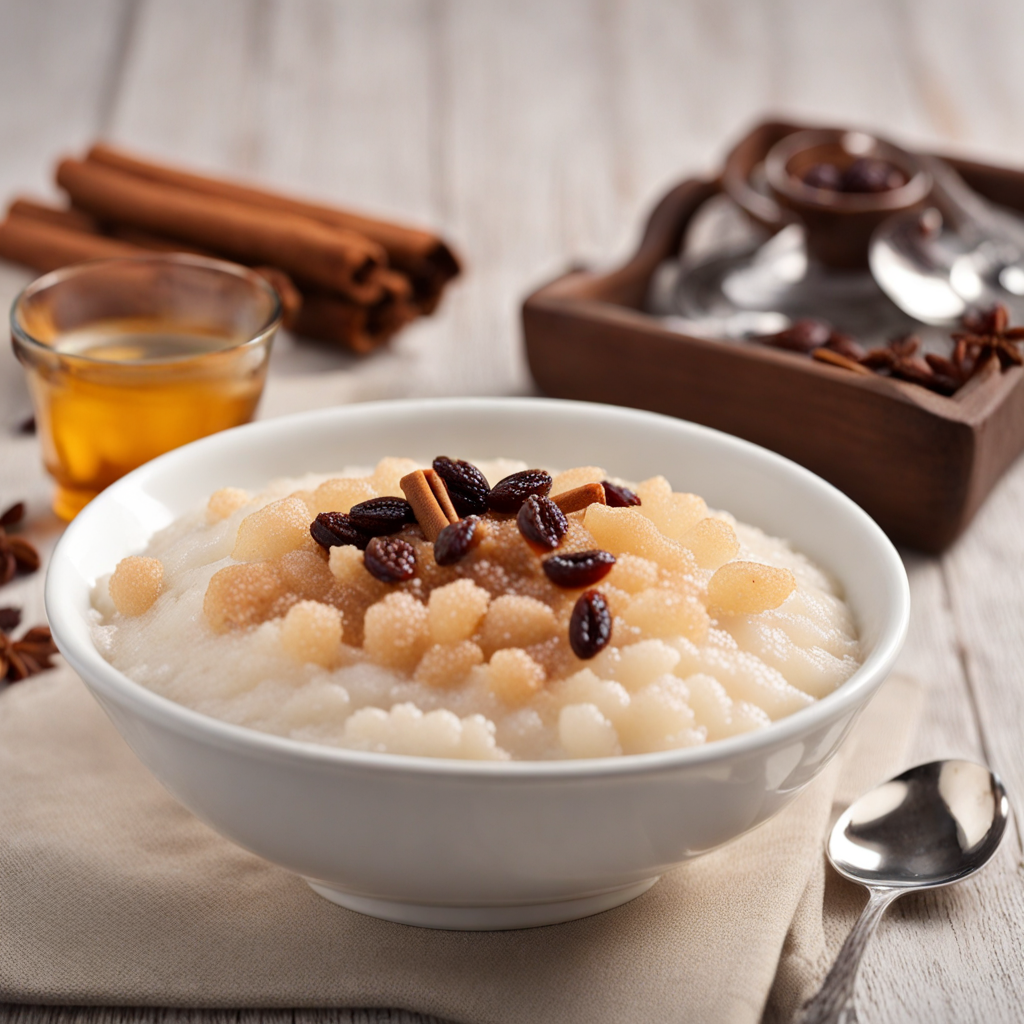Kibbeh
Kibbeh is a beloved dish originating from Lebanon, renowned for its rich flavors and unique texture. This traditional food primarily consists of finely ground bulgur wheat mixed with minced meat, typically lamb or beef, and a blend of aromatic spices. The mixture is then crafted into various shapes, with the most popular being oval or round balls. What sets Kibbeh apart is its duality; it can be served raw, resembling a tartare, or cooked, often baked or fried, allowing for a delightful contrast in flavors and textures. One of the standout elements of Kibbeh is the seasoning. The dish is often infused with warm spices such as cinnamon, allspice, and nutmeg, which lend it a depth of flavor that is both comforting and exotic. A common variation includes pine nuts, which add a delightful crunch and nutty richness. Additionally, Kibbeh can be paired with yogurt or tahini sauce, enhancing its savory profile while adding a creamy tang that complements the dish beautifully. Kibbeh is not just a meal; it is a cultural experience that embodies the spirit of Lebanese hospitality. Traditionally served during gatherings and celebrations, this dish brings people together, inviting them to share in its deliciousness. Whether you enjoy it as a hearty main course or a flavorful appetizer, Kibbeh offers a taste of Lebanon’s culinary heritage that is both satisfying and memorable.
How It Became This Dish
Origin of كبة كبة, or Kibbeh, is a cornerstone of Lebanese cuisine with a rich and complex history that reflects the diverse cultural influences that have shaped the region over millennia. While its exact origins are debated, it is widely believed to have originated in the Levant, particularly in modern-day Lebanon, Syria, and Palestine. Archaeological evidence suggests that variations of this dish may date back to ancient Mesopotamia, with records of similar dishes found in texts from the Roman and Byzantine periods. The primary components of كبة traditionally include bulgur wheat, minced meat (usually lamb or beef), onions, and a variety of spices. The preparation of كبة requires a meticulous process: the bulgur wheat is soaked, the meat is finely minced, and the two are combined with spices to create a dough-like consistency. This mixture is then shaped into balls or patties, sometimes filled with spiced meat, nuts, or vegetables. The dish can be served raw, baked, fried, or boiled, highlighting its versatility and adaptability to different cooking methods. \n\n Cultural Significance In Lebanon, كبة is more than just a dish; it is a symbol of hospitality and community. It is often served at family gatherings, weddings, and religious celebrations, where its preparation is seen as a communal activity that brings people together. The act of making كبة is often passed down through generations, with families maintaining their own unique recipes and techniques. This has created a rich tapestry of regional variations, with each family adding its personal touch to the dish. The cultural significance of كبة extends beyond family gatherings. It has become a part of Lebanon's national identity, recognized and celebrated in both local and international culinary circles. In many Lebanese households, serving كبة is a sign of generosity and warmth, showcasing the host's culinary skills and connection to their heritage. In this way, كبة serves as a bridge between the past and present, linking generations through shared tastes and memories. \n\n Development Over Time As the centuries progressed, كبة evolved, influenced by the cultural exchanges that occurred through trade, migration, and conquest. With the advent of the Ottoman Empire in the 15th century, many new spices and cooking techniques were introduced to the Levant. This led to the incorporation of ingredients such as cinnamon, allspice, and pine nuts into traditional كبة recipes, enriching its flavor profiles and enhancing its appeal. Regional variations of كبة began to emerge more prominently during this time. For instance, in northern Lebanon, a type known as كبة نية (Kibbeh Nayeh) is popular, consisting of raw minced meat mixed with spices and bulgur, served with olive oil and fresh vegetables. In contrast, southern Lebanon favors كبة بالصينية (Kibbeh bil Sanieh), a baked version that includes layers of spiced meat and bulgur, often topped with pine nuts and served with yogurt. In the mid-20th century, the Lebanese diaspora began to spread across the globe, carrying their culinary traditions with them. This migration led to the introduction of كبة in various countries, particularly in the Americas and Europe, where Lebanese communities established restaurants and food markets. These establishments often adapted traditional recipes to suit local tastes, leading to new interpretations of كبة while still honoring its roots. \n\n Modern Interpretations In contemporary cuisine, كبة continues to thrive and evolve. Chefs and home cooks alike experiment with new ingredients and cooking techniques, pushing the boundaries of this traditional dish. For example, today, one can find innovative versions such as كبة stuffed with cheese or incorporating quinoa as a gluten-free alternative to bulgur. Additionally, the rise of vegetarian and vegan diets has prompted the creation of meat-free كبة, using lentils or chickpeas as a base, showcasing the dish's adaptability to modern dietary preferences. Furthermore, the global interest in Middle Eastern cuisine has elevated كبة to a position of prominence in international culinary scenes. Food festivals, cooking classes, and social media platforms have played significant roles in popularizing this dish beyond its traditional confines. Chefs often highlight the cultural stories behind كبة, educating diners about its history and significance, thereby fostering a greater appreciation for Lebanese culinary heritage. \n\n Conclusion As we observe the journey of كبة from its ancient origins to its modern-day interpretations, it becomes clear that this dish is a reflection of Lebanon's rich history and cultural diversity. Each bite of كبة tells a story, connecting people to their heritage and to one another. Its continued evolution ensures that كبة will remain a beloved staple of Lebanese cuisine for generations to come, a testament to the enduring power of food as a means of cultural expression and connection. Whether enjoyed in a bustling restaurant in Beirut or at a family gathering in a distant diaspora community, كبة embodies the spirit of Lebanon, uniting flavors, traditions, and people across time and space.
You may like
Discover local flavors from Lebanon


